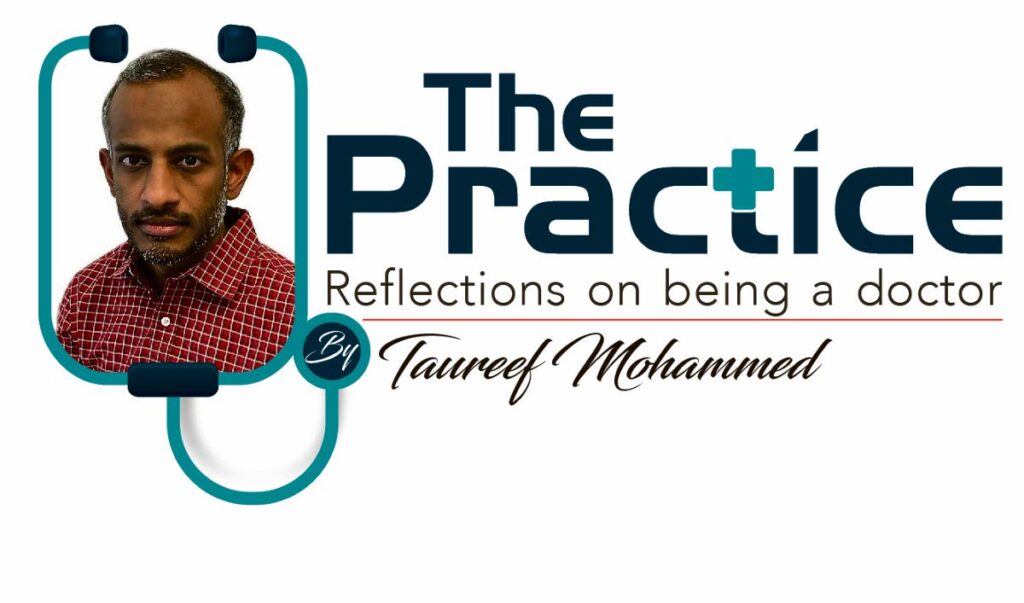The disassembling of the human

Taureef Mohammed
THE PATIENT lying in the bed was a living corpse: the heart tracing looked perfect, the blood pressure looked adequate, oxygen saturation was over 90 per cent, but, still, the patient looked dead. It seemed like life had been sucked out of him. He looked frail. When he opened his eyes he stared blankly.
“He is dying. Who knows, maybe he is already dead,” my attending, who was seeing the patient for the first time, said. Dying/death was a diagnosis, it seemed, and everybody had missed it.
For two weeks modern medicine – practised in a dazzling, multi-storey, academic hospital, built, it seemed, of glass and equipped with the latest of everything: every investigation, a click away; every specialist, a call away – had disassembled this human into component parts, so much so that the patient lying in the bed in the cardiac care unit did not appear to be a human, but a conglomerate of organs that was being kept alive by machines and medications controlled and doled out by multiple specialists – cardiologist, nephrologist, respirologist, gastroenterologist, neurologist, critical care specialist – who tweaked the components of the circuit while the family remained clueless that their loved one was no longer there, that the empty stares were indeed empty.
How had this happen?
I suspect that the disassembly had happened swiftly, and almost automatically.
These days, humans are disassembled from the time they are wheeled into an emergency room, or walk into a doctor’s office. It is one of the successes – or a curse, depending on how you look at it – of modern medicine. Practitioners know the human body and its diseases down to the granular – no, even finer than that – molecular level.
Do we actually see the human anymore? Have we all become pathologists looking through figurative microscopes, so fixated on pathology that we are incapable of seeing the human?
Perhaps the above example was an extreme case.
The idea, though, that the human has been disassembled is not extreme. In fact, it is the everyday reality for many people who are regular users and providers of healthcare.
Take, for instance, a person with multiple medical conditions, say, hypertension, diabetes mellitus, chronic kidney disease, rheumatoid arthritis, asthma, heart failure. This person can easily be followed by five different specialists. Each specialist competently disassembles the patient every time the patient is seen.
The problem is – whether it is because of time constraints, poor communication, incompetence, or just pure carelessness – the patient is not always reassembled. Off to the next specialist – in pieces. And so the patient hops around carrying bits and pieces of themselves from specialist to specialist – modern medicine.
One may argue that it is the family doctor’s responsibility to reassemble the patient. This is a cop-out. In medicine, nobody has the luxury to treat only a heart, kidney, or lung, while turning a blind eye to the rest, the rest here referring to the human. Treating the organ and ignoring the human is not specialty medicine. It is, as one consultant – an old, grey-haired man about to retire – said, lazy medicine, lamenting how “doctors don’t think anymore.”
And so, the disassembling of the human – once the subject matter of medicine – has led to the mass production of simple-minded doctors who are more comfortable to think in linear, algorithmic models, who prefer to look through microscopes than to look at nuanced, ambiguous human beings and figure them out. It is faster and, for sure, more lucrative.
But to blame doctors for this outcome is disingenuous. We, just like patients, are pawns in a system that has advanced leaps and bounds. The human had been disassembled on day one of medical school, and remained disassembled, the components drifting further apart, as we shuttled through medical school, residency training, subspecialty, then sub-subspecialty training.
How do we reassemble the human being in the doctor’s office, and at the bedside? The humanities – not science – hold the key. Many studies have looked at the effects of teaching the humanities in medical school. Among the benefits included improved self-awareness and confidence, better tolerance for ambiguity, higher levels of empathy, and lower rates of burnout.
If people like Dr Premchand Ratan – who recited poetry on ward rounds and encouraged medical students to read novels so that they can imagine what it was like to live with a stroke – still existed there would be no need to revise medical curriculum. But they don’t make them like that anymore.
They make machines instead – and why not?
Taureef Mohammed is a physician from TT working in Canada
E-mail: taureef_im@hotmail.com

Comments
"The disassembling of the human"